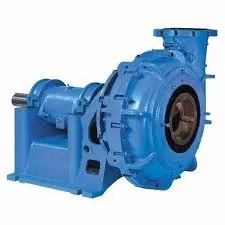-
 support@minemaxx.com
support@minemaxx.com
-
 0086-311-87833311
0086-311-87833311
 NO.8 JIHENG STREET,QIAOXI DISTRICT,SHIJIAZHUANG,HEBEI,CHINA
NO.8 JIHENG STREET,QIAOXI DISTRICT,SHIJIAZHUANG,HEBEI,CHINA
Different Types of Impellers Used in Pumps for Enhanced Performance
Understanding Pump Impeller Types
Pumps are essential devices used across various industries for fluid transport, and one of the key components that influences their efficiency and performance is the impeller. The impeller is a rotating component that impart energy to the fluid, elevating its flow rate and pressure. Understanding the different types of pump impellers is crucial for selecting the right pump for specific applications.
Types of Pump Impellers
There are several types of pump impellers, each designed for specific functionalities and efficiency
. The main types include1. Closed Impellers A closed impeller consists of two shrouds or covers that completely enclose the impeller vanes, forming a compact and efficient design. This type of impeller is widely used in centrifugal pumps as it provides high efficiency and good hydraulic performance. Closed impellers can handle liquids with some solids and generally produce high pressure and flow rates, making them ideal for various applications, from water supply to chemical processing.
2. Open Impellers Open impellers lack any shrouds, giving them a more simplified design. This type allows for larger solids to pass through without clogging, making it suitable for applications where the pumped fluid contains particulates or slurries. However, open impellers typically offer lower efficiency compared to closed designs. They are often used in wastewater treatment and mining applications.
3. Semi-Open Impellers Combining features of both open and closed impellers, semi-open impellers have one shroud and one side that is open. This design offers a balance between efficiency and the ability to handle solids. Semi-open impellers are often utilized in applications where some level of solid handling is necessary while still maintaining a decent flow rate, such as in certain industrial process pumps.
4. Vortex Impellers Vortex impellers are specifically designed to pump liquids that contain a significant amount of solids without clogging. They work by creating a vortex or whirlpool in the fluid, allowing larger solids to be moved without affecting the flow of the fluid itself. These impellers are commonly found in sewage and slurry applications where solid content is unavoidable.
5. Magnetically-Coupled Impellers In some specialized applications, magnetically-coupled impellers are used to eliminate any mechanical seal requirements. This design uses magnetic forces to drive the impeller without direct contact, preventing leakage of hazardous or valuable fluids. This type is often found in chemical or pharmaceutical industries where leakage can result in contamination or safety hazards.
pump impeller types

Factors Influencing Impeller Selection
When selecting the right impeller type, several factors must be considered
- Fluid Characteristics The composition, viscosity, and presence of solids in the fluid significantly influence the choice of impeller. For example, if the fluid contains large particles, an open or vortex impeller may be the best option.
- Flow Rate and Head Requirements The desired flow rate and the necessary head (pressure) determine the type of impeller that will meet system requirements. Closed impellers are generally preferred for high flow and pressure applications.
- Efficiency Different impellers have varying levels of efficiency, impacting energy consumption and operating costs. Closed impellers usually provide the highest efficiency, making them suitable for applications where energy savings are paramount.
- Application The specific service conditions and industry applications also play a critical role in impeller selection. Different industries, such as wastewater treatment, food processing, or chemical manufacturing, have unique requirements that dictate the use of certain impeller types.
Conclusion
In conclusion, understanding the various types of pump impellers is essential for selecting the appropriate pump for a given application. Each type of impeller, whether closed, open, semi-open, vortex, or magnetically-coupled, has its unique advantages and suitability based on fluid characteristics and operational demands. By carefully considering these factors, engineers and operators can ensure optimal performance and efficiency in their pumping systems.
-
Wet Parts for Optimal PerformanceNewsOct.10,2024
-
Vertical Pump Centrifugal SolutionsNewsOct.10,2024
-
Top Slurry Pump ManufacturersNewsOct.10,2024
-
The Ultimate Guide to Centrifugal Pump for SlurryNewsOct.10,2024
-
Pump Bearing Types for Optimal PerformanceNewsOct.10,2024
-
A Guide to Top Slurry Pump SuppliersNewsOct.10,2024
-
Slurry Pump Parts for Optimal PerformanceNewsSep.25,2024

